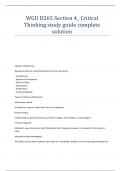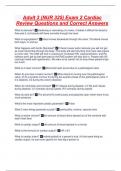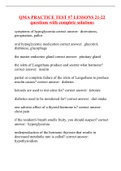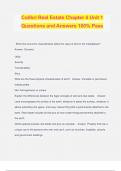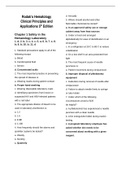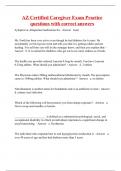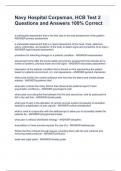Tentamen (uitwerkingen)
Exam (elaborations) TEST BANK FOR Manifolds, Tensor and Forms An Intro
Exam (elaborations) TEST BANK FOR Manifolds, Tensor and Forms An Intro 6 Let v1, v2 ∈ ker T . Then T (av1 + bv2) = aT v1 + bT v2 = 0, so ker T is closed under linear combinations. Moreover ker T contains the zero vector of V. All the other vector space properties are easily seen to follow, so...
[Meer zien]





